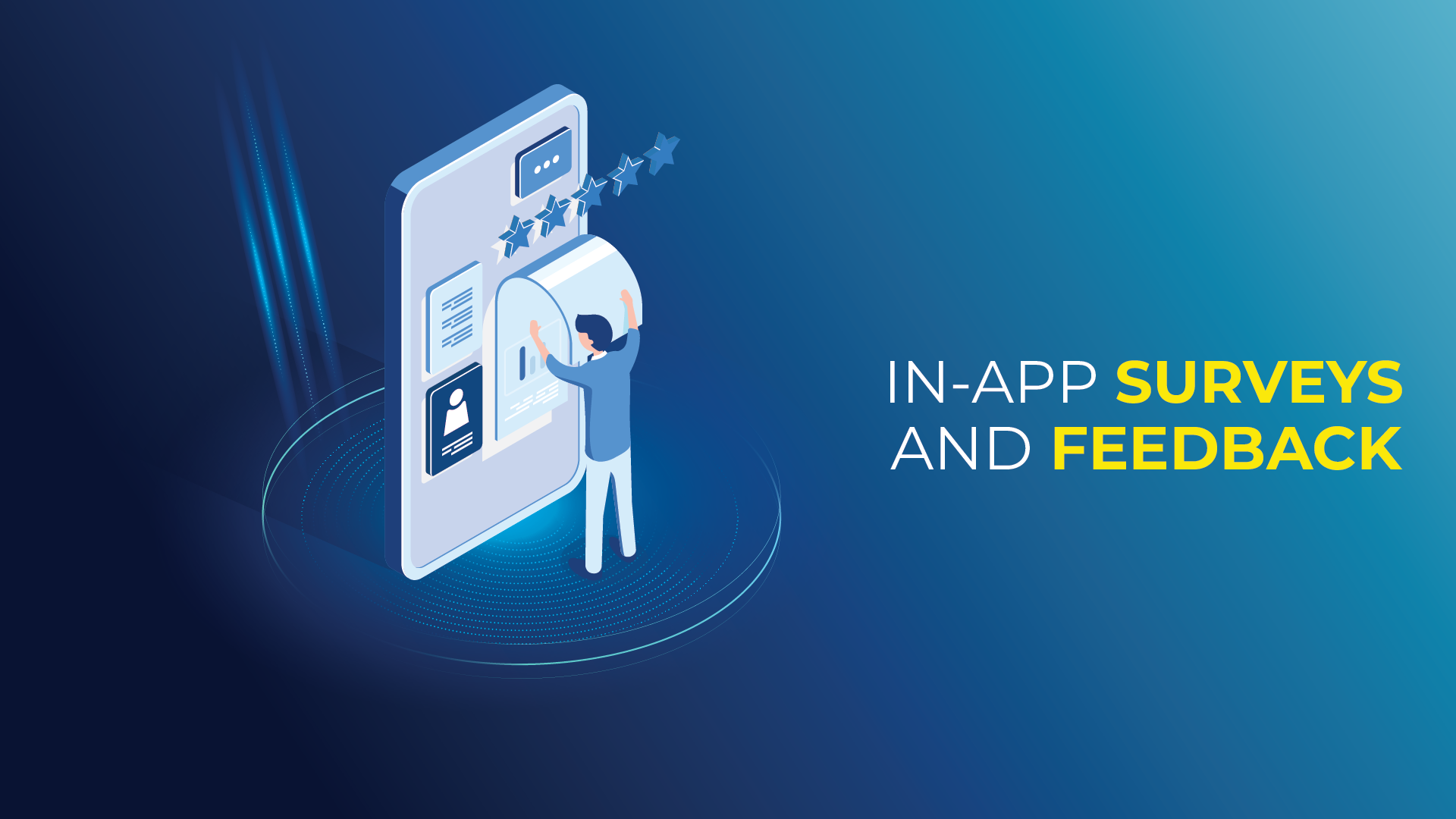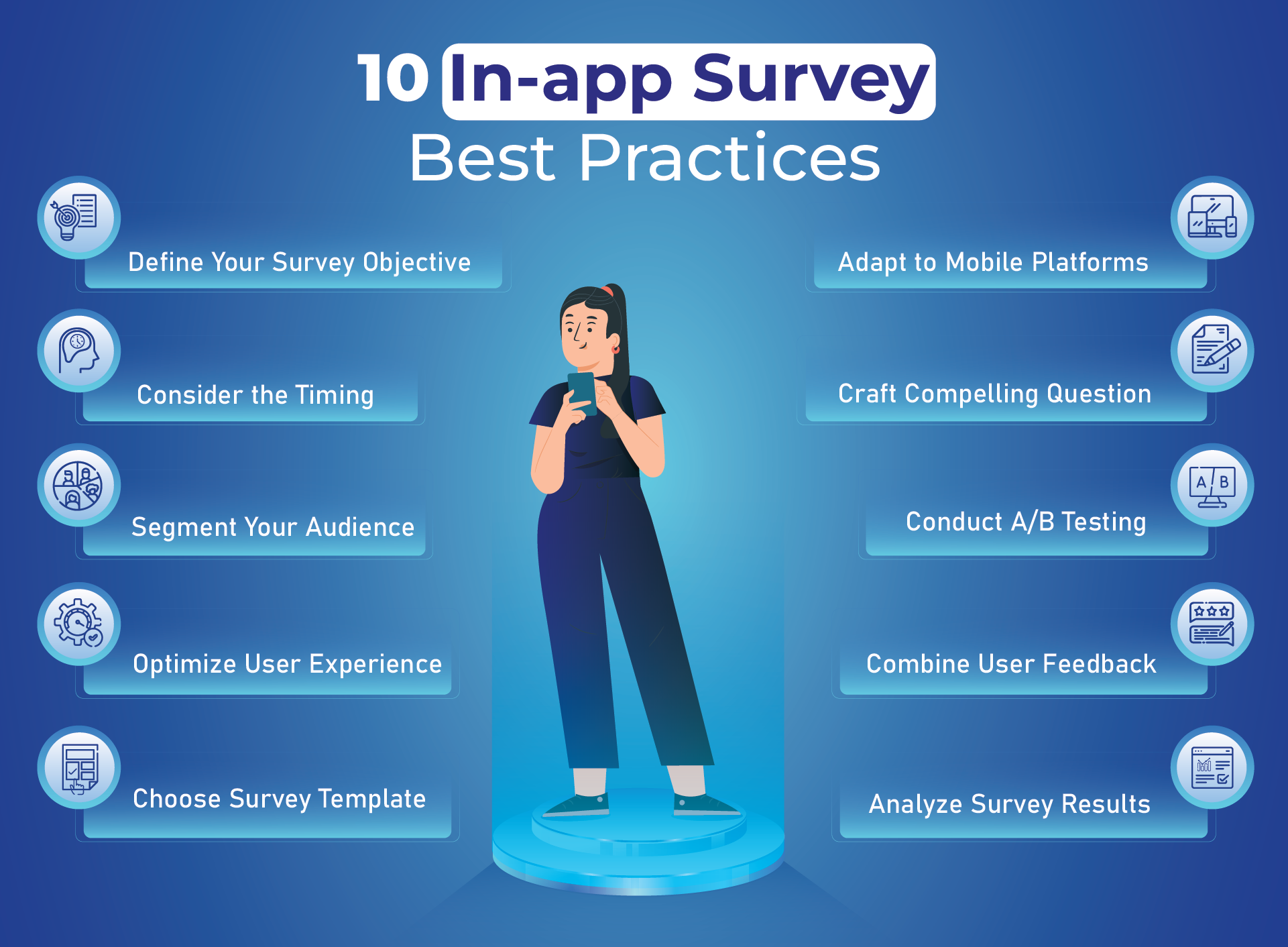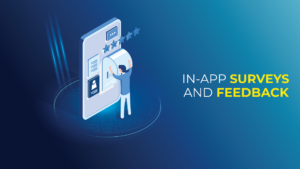
Customer Lifecycle Vs Customer Journey – What’s The Differences
Customer Lifecycle Is a Complete Cycle of the Customer with the Business whereas Customer Journey focuses on specific paths or interactions. Assume a customer lifecycle

Do you want to create a product that truly speaks to your customers? Are you looking for ways to gather valuable feedback and improve the user experience? In-app surveys and feedback collection hold the key to unlocking the insights you need.
With countless products flooding the market, understanding your users and catering to their needs has never been more crucial. In-app surveys provide a direct line of communication with your users, offering valuable insights and paving the way for improvement. Interested in knowing more about it?
Great! This article will be your ultimate guide, shedding light on in-app surveys and showcasing real-life examples. So, why wait? Let’s get started!
An in-app survey is a short questionnaire integrated into a website or app, allowing users to provide feedback without leaving the page. It’s a convenient way for businesses to collect customer insights and improve their products.
In-app surveys and feedback replace or complement traditional methods like email or chatbot surveys. They can be in the form of pop-ups or other methods, depending on the app’s nature. In-app surveys provide valuable feedback on user onboarding, experience, features, and functionalities.
Conducting in-app surveys offers tons of benefits for businesses seeking to improve their user experience and drive growth. Here are some key advantages:
Forget generic feedback that leaves you scratching your head. In-app surveys enable you to effortlessly target specific customer segments. By reaching the right audience with the right questions, you’ll gather more meaningful feedback. This helps you understand your users better and make informed decisions that resonate with their needs.
Put yourself in your users’ shoes. Would you want to go through a process just to provide feedback? Of course not!
In-app surveys provide a convenient and seamless feedback experience for users. Contrary to traditional surveys, in-app surveys don’t redirect your users to external links. This means you’ll receive a greater volume of responses and gain deeper insights into user preferences.
In-app surveys are a quick and easy way to learn about your users’ experiences and gain essential data. It allows you to collect feedback throughout their journey, revealing valuable insights, pain points, and potential issues.
In-app surveys simplify the process of collecting and analyzing feedback. Advanced survey tools automate the collection and segmentation of responses, making it easier to identify trends.
Furthermore, you can enhance user interactions by setting up automated workflows to personalize and respond to users based on their survey responses. This ensures timely and tailored engagement.
Users become more loyal and satisfied with a brand that values their opinion. In-app surveys allow your consumers to have a direct impact on product decisions. It helps increase user engagement by creating a sense of ownership.
Your users are your greatest asset, and their input is invaluable. In-app surveys empower you to address users’ feedback in real-time. By collecting feedback directly from your website or app, you can swiftly identify and resolve user concerns. This not only enhances the user experience but also prevents customer churn and fosters loyalty.
Businesses can use numerous forms of in-app surveys to get feedback and insights from their users. Here are some common types:
Welcome surveys collect essential information from users when they log in for the first time. These surveys help personalize their experience by gathering data like preferences, interests, and demographics.
NPS surveys help you understand customer loyalty by asking them to rate how likely they are to recommend your app. For example, it asks users to rate their chance of recommending your app on a scale of 0 to 10.
CES surveys assess the level of effort users have to put in to accomplish tasks or achieve their goals within your app. They help identify areas where you can simplify processes and reduce friction.
These surveys ask users to provide open-ended feedback about their experience with your app. Users can share their thoughts, suggestions and highlight any specific issues.
Customer satisfaction surveys ask consumers to rate their experience with specific features or interactions in your app. Usually, it uses a rating system or predetermined response choices.
Feature request surveys give users the opportunity to submit their ideas for new features or share undiscovered features. These surveys offer a direct channel for users to contribute their input and shape the future of your app.
Churn surveys are triggered when users cancel their subscriptions or indicate their intention to do so. These surveys are designed to understand the reasons behind their decision and gather feedback on areas of dissatisfaction.

Following the right strategies will maximize the effectiveness of your in-app surveys and gather valuable feedback from users. Here are some tips to get the most out of your In-app surveys and feedback collection:
Before you start creating your survey, clearly define your goals. Ask yourself, why you are conducting the survey, and what you want to get out of it. Having a clear goal in mind will help you accurately measure the success of your survey.
Say you are using a project management tool. While you are in the middle of creating a new project, a survey pops up! Annoying, right?
Launch your survey at the right time to avoid interfering with the user experience. Timing is key, so avoid launching the survey when users are performing important tasks. Choose survey tools that allow you to trigger in-app surveys at the right moment for the right audience.
Segmenting your audience is essential when creating in-app surveys. Suppose you have a SaaS product that offers both a free and a premium version. By segmenting your audience into free users and paying customers, you can collect insights specific to each group.
For example, you may want to understand why free users haven’t upgraded to the premium version or gather feedback on the additional features that paying customers find most valuable. This segmentation allows you to tailor your strategies and improvements based on the unique needs and preferences of each audience segment.
Prioritize user experience when designing your surveys. Ensure that the survey design seamlessly blends with your app’s overall look and feel. Avoid using annoying pop-ups or disruptive survey designs that may frustrate your users. Keeping the response process quick and effortless will encourage more users to participate.
Creating a survey from scratch can be overwhelming, but thanks to in-app survey tools, you won’t have to do it. You’ll find plenty of pre-designed survey templates out there to make your work easier. Select a template that aligns with your survey’s goal and customize it per your audience’s needs and your brand’s style.
Did you know that around 64.6% of the world’s population uses mobile devices for internet access? Yes, that makes mobile optimization for surveys extremely important.
Optimize your surveys for all screen sizes. Test your survey design on multiple mobile devices to ensure readability and a smooth user experience. Consider how the survey will appear on different screen sizes and make the necessary adjustments to guarantee accessibility.
The way you word your questions greatly influences the success of your survey. Ensure you use a clear, easy-to-understand, and precise style. Take the time to review each question and remove any unnecessary words to keep the survey concise. Also, avoid overloading the survey with too many questions.
Don’t rely solely on assumptions when crafting your surveys. Run A/B tests to experiment with different survey elements such as copy, targeting, and launch timing. Conducting these tests will help you identify the most effective options and improve future surveys based on what resonates with your audience.
Don’t leave your survey data alone. Connect it with user behavior data to understand how your audience interacts with your app. By linking user feedback with specific app features or negative sentiments, you can find areas that need improvement and make smarter decisions to enhance your app’s performance. Combining user input and behavior data will help you gain insightful information to improve your app.
Last but not least, evaluate your survey data constantly and dive deeper into different segments of your audience. Real-time feedback analysis will help you spot negative reviews and take prompt action to address them.
Let’s explore some real-life user feedback survey examples that helped companies make more user-centric products:
Evernote collects device-specific information and evaluates consumer happiness through a simple in-app survey. Their one-page survey asks specific questions about usability, feature availability, responsiveness, and reliability to measure overall satisfaction. This comprehensive approach allows for a deeper understanding of the app’s performance across different aspects
Slack uses a one-page survey with three questions. They collect qualitative feedback via a customer satisfaction (CSAT) rating and an open-ended question format. This combination allows consumers to express their opinions and provides insightful information about user satisfaction.
HubSpot, a popular cloud-based customer support platform, integrates in-app surveys to collect user feedback seamlessly. They keep users interested by allowing them to answer questions and leave comments without leaving the platform.
This user-centric strategy improves satisfaction and promotes engagement between HubSpot and its user base. On the other hand, it enables them to continuously update their platform.
Twitter integrates surveys seamlessly into the app, avoiding annoying pop-ups. They have a dedicated survey section within the feed where users can participate at their own pace. Users are directed to an external link to answer multiple-choice questions. It allows Twitter to gather accurate insights about its products and services.
So, as this article ends, I believe you now have a solid understanding of in-app surveys and feedback collection processes, how they can benefit your user experience efforts, and have witnessed some real-life user feedback examples.
In-app surveys offer a direct channel of communication with your users, providing valuable insights and opportunities for improvement. By keeping surveys relevant, simple, and user-centric, you can harness their benefits effectively.
Wishing you the best of luck on your journey of continuous improvement and success!
The in-app feedback mechanism is a system or feature that allows users to provide feedback, make suggestions, or report issues directly from within the app. It allows users to share their thoughts, opinions, and experiences with the app’s developers or product team without having to leave the application.
You can implement various strategies to get user feedback on an app. Such as:

Customer Lifecycle Is a Complete Cycle of the Customer with the Business whereas Customer Journey focuses on specific paths or interactions. Assume a customer lifecycle

Welcome to the world of user activation software, where the secret sauce to unlocking the full potential of your product or service lies. In this
Have you ever wondered how businesses track user actions on their websites or apps? How do they measure the success of their marketing campaigns and

Have you ever wondered how users navigate through websites or apps? How do they seamlessly move from one screen to another, making decisions and accomplishing

Do you want to create a product that truly speaks to your customers? Are you looking for ways to gather valuable feedback and improve the

Ever wondered how often customers visit your online store before making a purchase? Or which promotional messages drive higher-value sales? User behavior segmentation holds the
Join companies that have successfully reduced their churn rate by up to 40% using StatWide’s predictive analytics.